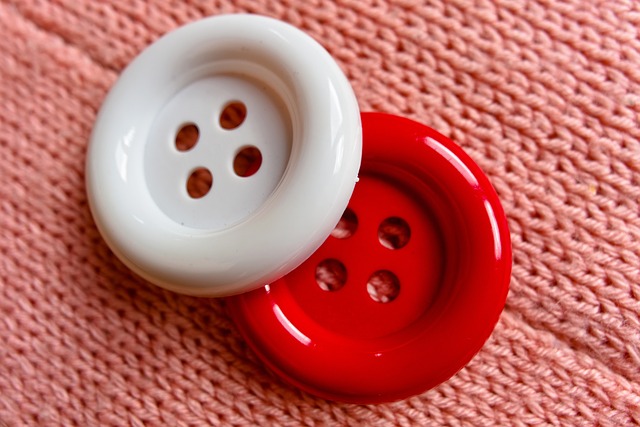Buttons are ubiquitous in our daily lives, seamlessly integrated into our clothing and accessories. Yet, their origins trace back thousands of years, to an era when they were more than just functional fasteners. The story of buttons is a captivating journey through time, beginning with their ornamental use in the Indus Valley Civilization around 2000 BCE. This blog delves into the rich history of buttons, exploring their evolution from decorative objects to essential components of modern fashion.
The Early Days: Buttons in the Indus Valley Civilization
The earliest known buttons were discovered in the ruins of the ancient Indus Valley Civilization, one of the world’s earliest urban cultures. These buttons, dating back to 2000 BCE, were crafted from seashells and shaped into geometric forms. Tiny holes were meticulously bored into these shells, allowing them to be attached to clothing. However, these early buttons were not used as fasteners; instead, they served an ornamental purpose, adorning garments and reflecting the wearer’s status and aesthetic sensibilities.
Buttons as Status Symbols
In the ancient world, buttons were often symbols of status and wealth. They were made from a variety of materials, including bone, wood, and metal, and were sometimes inlaid with precious stones. The craftsmanship involved in creating these buttons was a testament to the artisan’s skill and the wearer’s affluence. As buttons spread across different cultures, they retained their decorative role while gradually being recognized for their potential in fastening garments.
The Middle Ages: Functional and Decorative Uses
By the Middle Ages, buttons had evolved to serve both decorative and functional purposes. In Europe, they became increasingly popular as fasteners, particularly among the nobility. The intricate designs and luxurious materials used in button-making made them a fashionable accessory, while their practical application in securing clothing became more widespread.
During this period, buttonholes were also developed, transforming buttons into effective fasteners. This innovation allowed for a more tailored fit in clothing, enhancing both comfort and style. Buttons were sewn onto doublets, gowns, and other garments, often in elaborate patterns that showcased the wearer’s social status and personal taste.

The Renaissance: Buttons in Fashion
The Renaissance era saw a significant shift in the use of buttons, as fashion became an important aspect of daily life for the upper classes. Buttons were no longer merely functional; they became central to the design of garments. Tailors and designers experimented with placement and patterns, using buttons to create visually striking effects.
In addition to traditional materials, new techniques and resources were employed in button-making. Buttons were crafted from glass, porcelain, and even covered in fabric to match the garments they adorned. This period marked the beginning of buttons as integral elements of fashion, reflecting the wearer’s individuality and the evolving trends of the time.
The Industrial Revolution: Mass Production and Accessibility
The advent of the Industrial Revolution in the 18th century brought about significant changes in button production. With the development of machinery, buttons could be mass-produced, making them more accessible to people of all social classes. This democratization of buttons led to their widespread use in everyday clothing, from workwear to formal attire.
Materials like plastic and metal became common in button manufacturing, allowing for greater variety and durability. The efficiency of mass production also meant that buttons could be produced in large quantities, meeting the demands of a growing population. This period marked a turning point in the history of buttons, as they transitioned from luxury items to essential components of everyday clothing.
Modern Times: Buttons in Contemporary Fashion
Today, buttons are an intrinsic part of the fashion industry and our daily lives. They come in an array of shapes, sizes, and materials, reflecting the diversity and creativity of modern design. While their primary function remains to fasten garments, buttons continue to serve as decorative elements, adding flair and personality to clothing and accessories.
In contemporary fashion, buttons are used in innovative ways, from statement pieces on high-fashion runways to practical closures on everyday wear. Designers experiment with unconventional materials and unique placements, pushing the boundaries of traditional button design. The versatility of buttons ensures their continued relevance in the ever-evolving world of fashion.
The Cultural Significance of Buttons
Beyond their practical and decorative uses, buttons hold cultural significance in various societies. In some cultures, buttons are associated with good luck and protection. For example, in China, jade buttons are believed to bring prosperity and ward off evil spirits. In Western traditions, buttons have been used in various superstitions and rituals, such as sewing a button onto clothing to ensure good fortune.
Buttons also play a role in historical and cultural storytelling. Vintage buttons, often collected and preserved, offer glimpses into the fashion and societal norms of past eras. They serve as tangible connections to history, providing insights into the materials, craftsmanship, and aesthetics of different periods.
The Future of Buttons
As we look to the future, the evolution of buttons continues. Innovations in materials and technology are opening new possibilities for button design and functionality. Smart buttons, embedded with microchips or sensors, are being developed for use in wearable technology, offering features like fitness tracking or electronic payments.
Sustainability is also becoming a key consideration in button production. Eco-friendly materials and ethical manufacturing practices are gaining traction, reflecting the growing awareness of environmental impact in the fashion industry. Designers and manufacturers are exploring ways to create buttons that are not only stylish and functional but also sustainable and responsible.
The history of buttons is a testament to human ingenuity and creativity. From their origins in the Indus Valley Civilization to their modern-day applications, buttons have evolved to meet the changing needs and tastes of society. As both functional fasteners and decorative elements, buttons have left an indelible mark on the world of fashion and everyday life. Their enduring presence underscores their significance, reminding us of the intricate connections between utility, art, and culture.



